Are you striving to conquer longer distances on your bike, but you find yourself constantly running out of steam?
You’re not alone.
Many cyclists focus on training their muscles and upgrading their equipment, often overlooking a vital aspect of the ride: their breath.
Proper breathing for cycling is more than just a natural action, it’s a powerful tool that can significantly enhance your endurance, optimize your energy levels, and also transform your overall cycling experience.
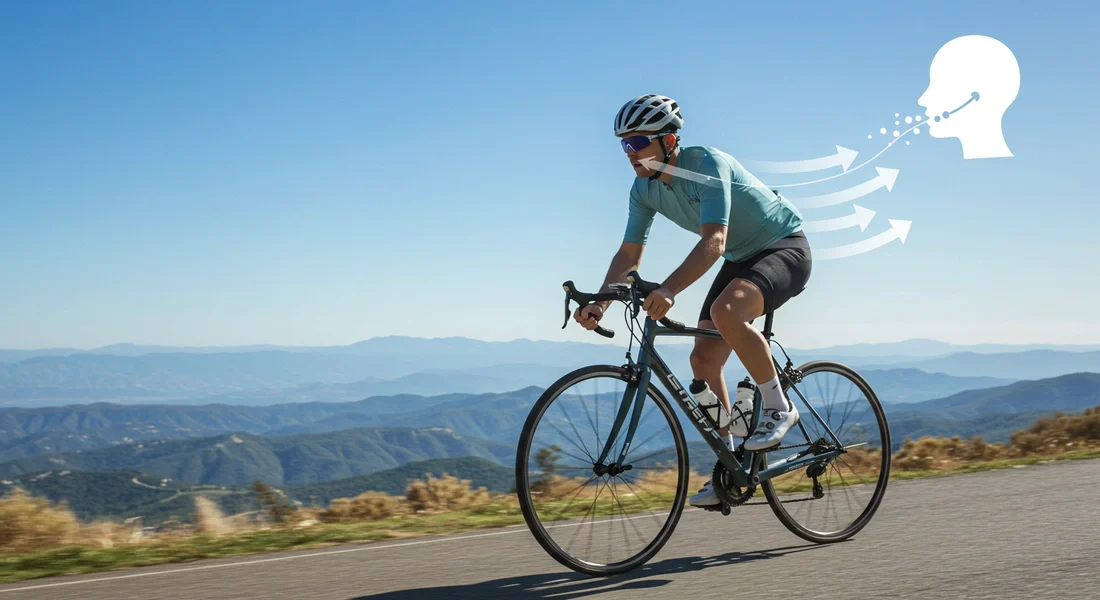
In this guide, we will dive into the science of breathing, we’ll be exploring specific techniques that will help you to maintain your endurance and boost your performance.
Get ready to pedal harder for longer!
The Importance of Breath Control for Cyclists
To unlock your cycling potential, it’s important to go beyond simply pedaling and pushing yourself.
Understanding how breathing is linked to all parts of your body, and especially your muscles, can give you a greater edge on your competition, or allow you to simply enjoy your workout more.
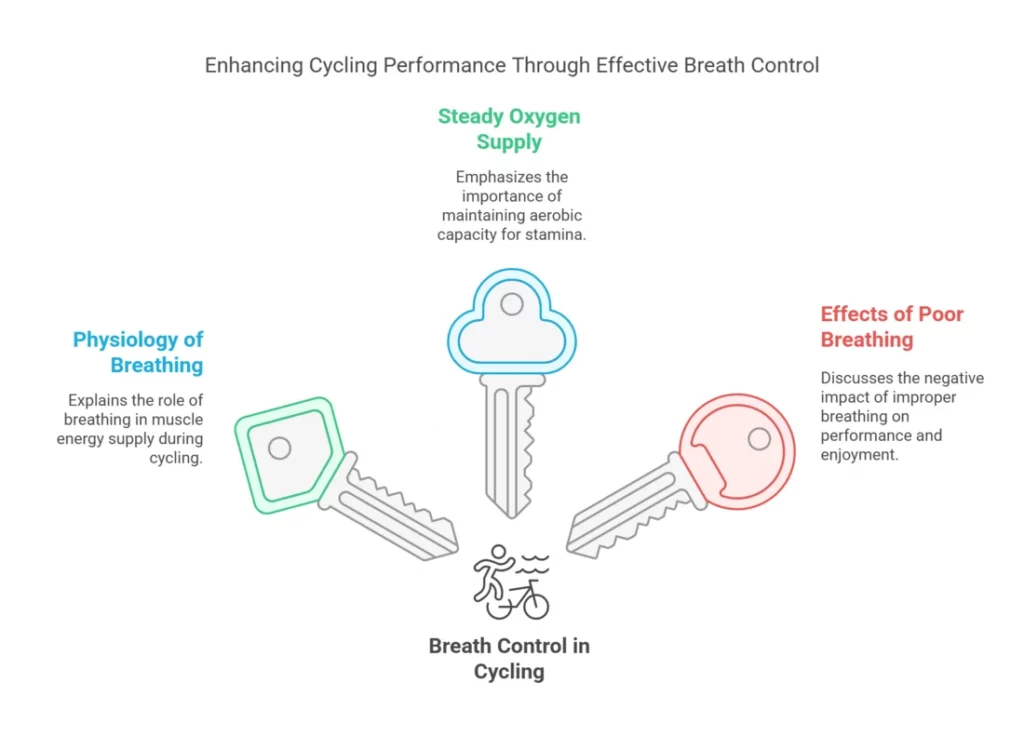
Key Concepts
- Physiology of Cycling and Impact of Breathing:
- During cycling, your muscles demand a substantial amount of energy, which is largely powered by oxygen. Breathing acts as the supply chain for this oxygen, and provides it where and when it is needed. Without proper breath control, your muscles won’t be able to work as efficiently.
- Using proper methods of breath control is therefore essential to ensure your muscles are getting enough oxygen and you are able to perform to your best potential.
- Importance of a Steady Oxygen Supply:
- To succeed in cycling, you need to make sure you are able to maintain a steady flow of oxygen throughout your activity. Maintaining aerobic capacity is key and is what sets apart a great workout and a bad one. Breath control also helps to improve overall stamina, so you can cycle for longer without experiencing the effects of breathlessness.
- Effects of Poor Breathing:
- Using an incorrect breathing technique can lead to a whole host of potential problems, that will affect all parts of the body. The most common is that poor breathing can lead to muscle tension, an increase in feelings of fatigue, and also shortness of breath. These will not only affect your physical wellbeing, but they can also have a negative impact on your overall enjoyment of your activity.
- It is also worth noting, that it is not just professional athletes who can use these techniques. Proper breathing is essential for cyclists of all abilities, whether you are a beginner, or a pro!
Best Breathing Techniques for Cycling Endurance
While it is great to understand the importance of breathing for cycling, the key factor in bettering your routine is to now understand some of the specific methods that you can use to improve your breath and your overall performance.
Here are some breathing techniques that will help you to maximize your performance on your next ride.
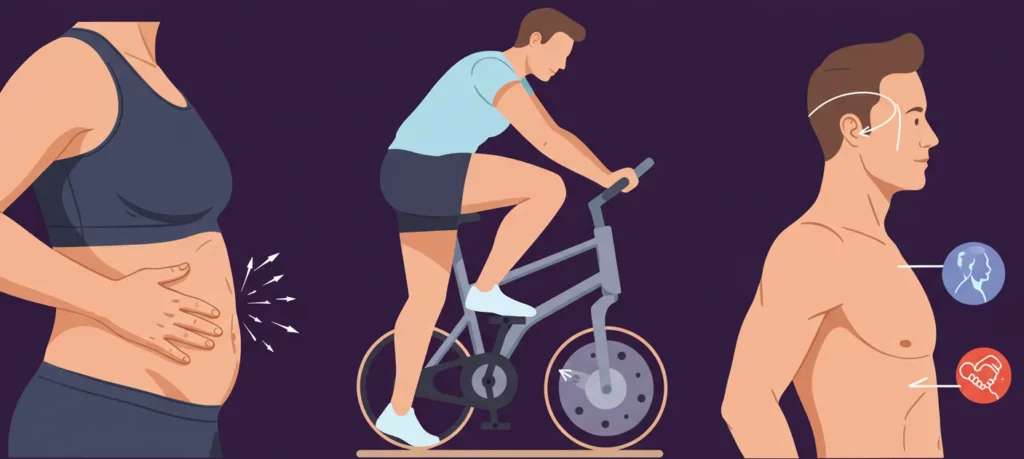
Breathing Techniques
- Technique 1: Diaphragmatic Breathing (Belly Breathing)
- What it is: Diaphragmatic breathing, often referred to as belly breathing, involves using your diaphragm to take slow, deep breaths that will maximize your oxygen intake, rather than taking shallow breaths from your chest. To perform this technique effectively, you need to focus on relaxing your core and using your diaphragm to fill your lungs, which will help to improve your posture, create a stable base for you to breathe, and also reduce stress levels.
- How to implement:
- Find a comfortable position either sitting or lying down.
- Place one hand on your chest, and the other on your belly.
- As you inhale, focus on pushing your belly out, rather than raising your chest, which will help to activate your diaphragm.
- As you exhale, allow your belly to relax again.
- Repeat this pattern until you are feeling more comfortable and in tune with your body.
- Real-Life Example:
- If you are climbing a steep hill, it can be easy to start to engage in chest breathing, which will not be effective in sustaining performance. Instead, slow down, focus on pushing your belly out, and you will find that you are able to climb for longer, with more control and less fatigue.
- Technique 2: Paced Breathing (Rhythmic Breathing)
- What it is: Paced breathing, also known as rhythmic breathing, involves coordinating your breath with the rhythm of your pedal strokes. This will make you more mindful and better attuned to your body. It is also particularly beneficial for energy management and for improving stamina, as your body will be able to better predict and adapt to your energy needs.
- How to implement:
- Choose a specific number of pedal strokes for each inhale and each exhale (such as 2:2, or 3:3).
- As you cycle, focus on counting each of your strokes and using the breath to coordinate your legs and your lungs.
- When your workout starts to get harder, you may want to reduce the number for each breath, to enable you to breathe faster.
- Real-Life Example:
- If you are cycling for a long distance, try to use paced breathing to ensure that you have a regular rhythm. If you try to go fast from the start, you will soon be breathless. Instead, implement paced breathing and allow your body to find a rhythm for long-term efficiency.
- Technique 3: Breath Holding Drills:
- What it is: Breath holding drills are an advanced method that involves intentionally holding your breath for specific periods to increase your tolerance to carbon dioxide, increase your lung capacity, and build overall cardiovascular endurance. This method is NOT for everyone and is only recommended for those who have advanced workout routines and are already familiar with breathing techniques.
- To implement this technique you also need to be aware of the risks, which can include dizziness, fainting, and potential injury. Be mindful to always seek medical advice before implementing this.
- How to implement:
- When you are performing your exercise, choose intervals for which you will hold your breath.
- As you cycle, try holding your breath for a small period, and then breathing in for the same period of time.
- Repeat this process, and incrementally increase it to a comfortable level.
- Real-Life Example:
- You may find this method useful when cycling uphill, to test your tolerance to the workout. You may also find this useful if you are training for a race.
Training Your Breathing Muscles
Just as you train your leg muscles to improve your cycling ability, you can also train the muscles you use to breathe.
Strengthening your respiratory muscles can enhance your breathing and overall fitness.
I will explore the key muscles that you need to work on, as well as specific trainers that you can use to level up your routine.”
Key Concepts
- Understanding Your Respiratory Muscles:
- The diaphragm is one of the most important respiratory muscles. This is a large muscle that is located at the base of your lungs and will allow you to take deep and controlled breaths. By improving the strength of this muscle, you will see a massive boost in your fitness and performance.
- Your intercostal muscles, which are located between your ribs, also play a role in expanding and contracting your chest. The more you train these muscles, the easier it will become to breathe effectively.
- The Role of Breathing Exercisers:
- Using a breathing exerciser can enhance your training by providing progressive resistance to your breath, which will encourage them to work more effectively.
- Breathing exercisers can also improve your aerobic capacity, enhance your stamina, and even decrease your overall feelings of fatigue. For cyclists, it can be particularly useful to focus on devices that improve both inspiratory (inhale) and expiratory (exhale) muscle strength.
Product Recommendation: After performing much research, I have found that the POWERbreathe Medic is one of the best options for strengthening your respiratory muscles to improve your breathing and cycling performance.
It has adjustable resistance, meaning it can be used by both beginners and advanced cyclists.
And it has also been scientifically proven to enhance performance.
Disclaimer: I am an affiliate partner of Amazon, and I will receive a commission from any sales that are made through this link, and this comes at no extra cost to you.
Customer Reviews/Feedback
Many users say that this product has enabled them to reach new levels of fitness, and also improve their overall breathing abilities.
I have been blown away by the progress that I have seen with this exerciser – John S (Social Media Comment)
For a long time, I thought that you could only train your leg muscles for cycling. I was very wrong! This product has helped me improve my overall fitness!” – Sally J (Website Testimonial)
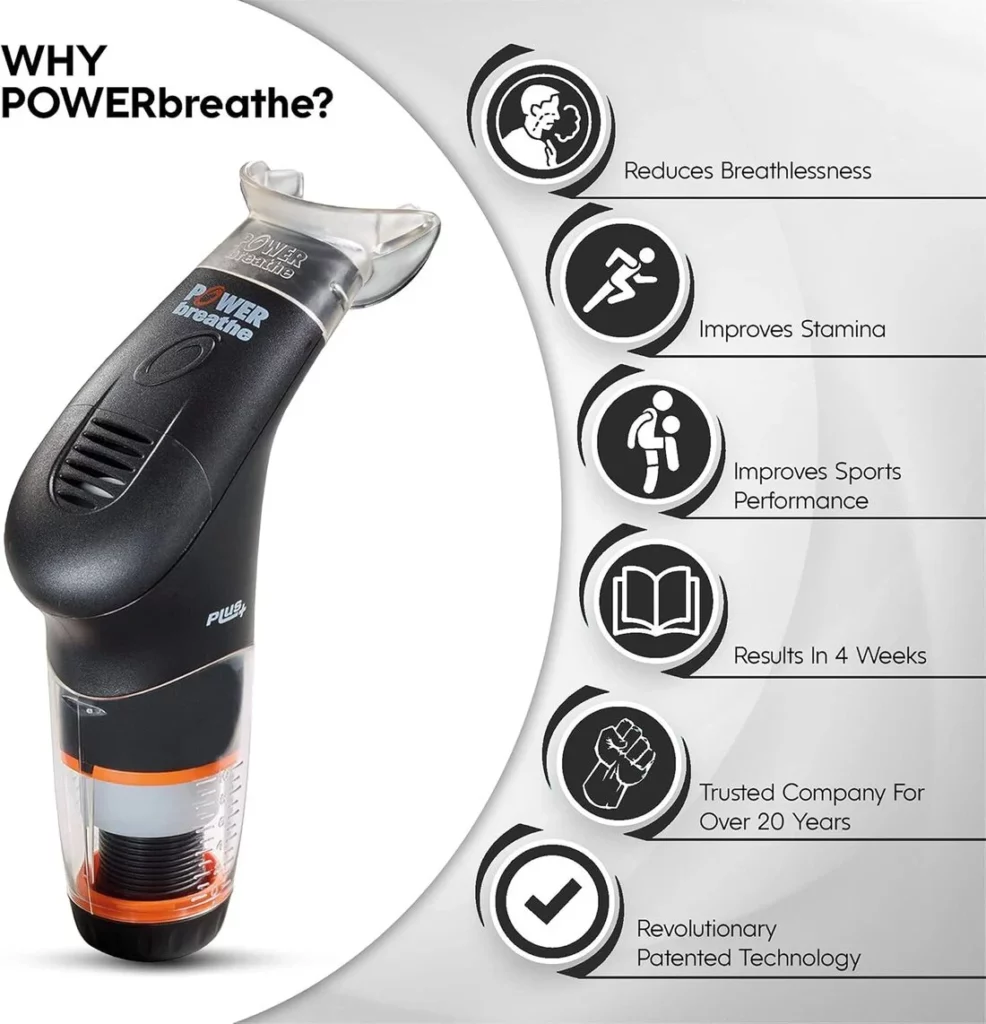
Avoid These Common Breathing Mistakes
As you embark on a journey to improve your breathing, it is also important to consider the common pitfalls that you should avoid.
In this section, I will be exploring the mistakes that many cyclists make, that can hinder their performance, and how to make sure that you are not making them.
By being aware of these points, you can take steps to improve your workouts and your overall wellbeing.
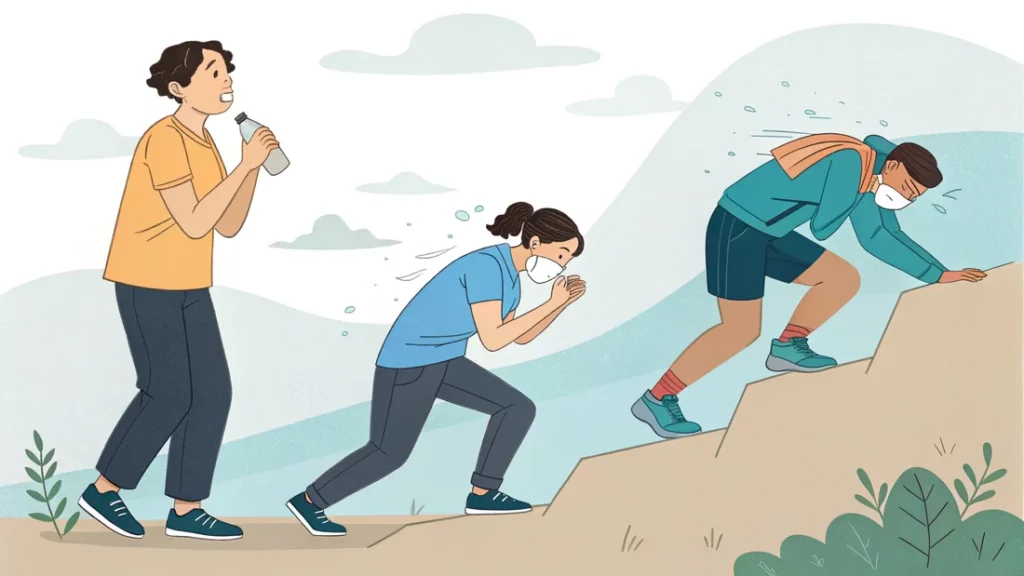
Key Mistakes
- Holding Your Breath:
- What it is: Holding your breath, which is often done unknowingly when you are cycling uphill, or you are pushing yourself too hard, can cause increased tension in your muscles, and also prevent your body from receiving enough oxygen. While you may be tempted to push through the pain, it is essential to remember to breathe.
- How to avoid it: You can prevent this by focusing on taking regular, paced breaths and also by ensuring that you are not overexerting yourself too soon. Be mindful of your breath, and allow your body to take over.
- Shallow Breathing:
- What it is: Shallow breathing is a common mistake that involves taking short, rapid breaths, which do not allow your lungs to fill fully, and your diaphragm to engage. As a result, your body will not receive as much oxygen, and you will also struggle to perform at your best. This type of breathing is an inefficient method of oxygen delivery and is also not sustainable over a long period of time.
- How to avoid it: To correct this, focus on practicing belly breathing. This will help you to make use of your full lung capacity, and will also improve your overall fitness and performance.
- Mouth Breathing:
- What it is: As discussed earlier, mouth breathing also leads to a variety of issues for cyclists. While it may feel necessary when you are pushing your limits, it also means that you are not taking advantage of the natural processes that take place when you are breathing through your nose.
- Mouth breathing leads to dehydrated airways, and an increased chance of letting pollutants into your body, which you want to avoid at all costs! When you push yourself, focus on pacing yourself, and try to breathe through your nose as much as possible.
Frequently Asked Questions About Breathing and Cycling
To further enhance your understanding of breathing and cycling, I have compiled a list of frequently asked questions.
These questions will provide clarity on some of the most important aspects of breathing and how they impact your performance on the bike.
- Question 1: How can breathing exercises improve cycling performance?
- Answer: Breathing exercises are a very effective method for improving your cycling performance. When implemented correctly, breathing exercises can significantly improve oxygen delivery, increase your stamina, and also reduce stress and muscle tension. By performing these exercises, you are ensuring that your muscles are performing to their full potential.
- Question 2: What breathing techniques will help my endurance?
- Answer: The best breathing techniques for improving your endurance while cycling are paced breathing and diaphragmatic breathing. Paced breathing helps you to coordinate your breathing with your movements which will improve efficiency, and diaphragmatic breathing will ensure you are taking deep and deliberate breaths, that are not just helping your performance, but also your muscles.
- Question 3: How often should I practice breathing techniques?
- Answer: For best results, it is best to practice breathing techniques regularly, and to make it a part of your overall routine. While you can simply focus on these techniques during your workout, you can also try to focus on them during your regular day, to see even more benefits. As long as you are being consistent, you will see improvements over time, and you will better connect with your body.
- Question 4: Is it okay to breathe through my mouth when cycling?
- Answer: While mouth breathing should be avoided, it is understandable that you may need to breathe through your mouth when you are pushing yourself during a high-intensity workout, or when you are cycling uphill. If you need to breathe through your mouth, try to pace yourself and ensure that you can return to nasal breathing as soon as you have lowered your intensity.
- Question 5: Is paced breathing useful for climbing uphill?
- Answer: Yes, paced breathing is highly effective when cycling uphill. Climbing can cause feelings of shortness of breath, and paced breathing will ensure that your body continues to receive the oxygen it needs. You can also use it to ensure you are pacing yourself to make the climb easier and safer.
- Question 6: Can proper breathing improve my cycling speed?
- Answer: Proper breathing can absolutely improve your cycling speed by enhancing your overall performance, reducing your energy expenditure, improving oxygen delivery, and allowing you to build more power, and also to increase efficiency, all of which will contribute to a much greater top speed.
My Final Thoughts on Breathing for Cycling
We have reached the end of our journey, and I hope you now have a newfound appreciation for the incredible power of breathing and its link to your ability to perform as a cyclist.
The art of combining mindful breath with your cycling workouts will open up many new doors for you, and also help you to achieve a new level of fitness.”
Key Takeaways
- Effective breathing is key to improving endurance and performance.
- There are various different breathing techniques that you can explore, such as diaphragmatic breathing, paced breathing and breath-holding drills.
- Learning to manage your breath, and to be in tune with your body, is not only good for fitness, but also for your overall health and well-being.
I now encourage you to implement the methods discussed in this blog, and to experiment with the breathing and see how it works for you.
Take what you have learned today, and turn it into a consistent practice.
If you would like to learn more, there are many resources that can be found online or from experts in this area.
Make sure you are consulting with credible sources.
I hope you have found the information in this blog post to be valuable, and I encourage you to take this knowledge, and to implement change in your life.
Good luck, and breathe!
References
- Endurance training of respiratory muscles improves cycling performance in fit young cyclists
- Link: https://pmc.ncbi.nlm.nih.gov/articles/PMC419707/#:~:text=The%20major%2C%20new%20finding%20of,experienced%20cyclists%20and%2For%20triathletes.
- Why It’s Credible: This study explores how inspiratory muscle training can improve cycling performance. It supports the claim that you can improve performance by training your muscles.
- Effects of Diaphragmatic Breathing on Health: A Narrative Review
- Link: https://pmc.ncbi.nlm.nih.gov/articles/PMC7602530/
- Why It’s Credible: It has been designed to show how this method helps to improve breathing.
Related Posts
No posts
